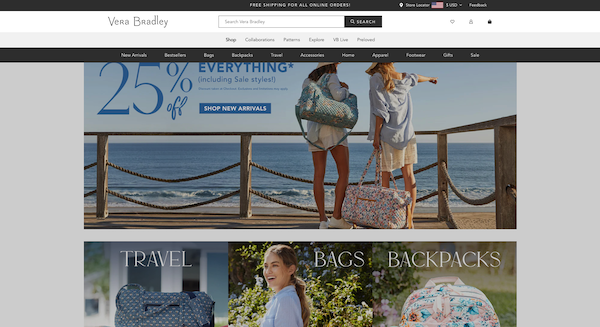
Each year, the holiday shopping season shatters new e-commerce records, and 2020 will be no different. This year, however, everything has been accelerated. Due to the COVID-19 pandemic, more brands have shifted online, more consumers are using online channels to shop and buy and more online orders are being shipped.
Due to the anticipated influx of orders and fulfillment demand, many brands and retailers are justifiably concerned whether their various shipping partners will be able to deliver their packages in a timely fashion — and whether they’ll still be able to maintain a profit.
Even as Amazon encourages those sellers participating in Seller Fulfilled Prime to ship products on the weekends, delays are expected in the months ahead. Potential issues this Q4 include:
- Amazon fulfillment centers — Many worry that Amazon’s fulfillment centers will become overburdened as they did in March and April, which could again lead to delayed (and canceled) inbound shipments.
- Carriers capping deliveries — According to a recent survey by CommerceNext, the biggest logistics concern for retail marketers is that carriers like FedEx and UPS would cap deliveries during peak periods.
- Prime Day complications — A spike in Prime Day order volume in October could compound any holiday shipping issues that are developing.
- USPS election delays — November will see a record-breaking amount of mail processed by the USPS due to mail-in voting. And the USPS will most likely prioritize ballots over packages.
- UPS/FedEx/USPS peak surcharges — UPS has already posted an updated list of their peak surcharges that extend into 2021, as has USPS. (More updates will follow.)
- Covid-related warehouse closures — Many brands and retailers still worry about a potential “second wave” of the virus that could shut down warehouses and make fulfillment more complicated.
Unfortunately, there’s no magic bullet for brands and retailers. It’s about understanding the potential risks and mitigating your own exposure to those risks and unknowns.
To help you prepare for the hectic months ahead, here are three of the top concerns brands and retailers are facing right now, along with a few recommendations on how to prepare now:
1. Speed of Delivery
Most brands and retailers expect delays from major carriers like FedEx and UPS, as well as extensions in handling time. In May, FedEx even had to cap deliveries during peak demand, something they very likely may have to do again.
Consumers are anticipating these delays as well. According to a survey ChannelAdvisor conducted with Dynata in August of over 1,000 active US consumers, 47% of consumers are concerned that brands and retailers won’t be able to deliver packages to them on time this holiday season. But the good news is that 78% of them are actually willing to wait longer for the delivery of those packages this season.
Potential Strategies:
- Evaluate additional third-party logistics (3PLs) solutions: ChannelAdvisor has developed a network of 3PL partners that might be able to help you diversify your shipping carriers.
- Understand your carrier restrictions and capabilities during Q4: Factor in lead times with carrier delivery windows.
- Communicate all lead times to customers: This communication begins by understanding the capabilities of your suppliers. Brands should expand their lead times as much as possible (whether through ChannelAdvisor templates or marketplace settings).
2. Profitability
Fulfillment capacity concerns are pushing major carriers to execute peak surcharges (USPS found here; UPS found here). Sellers are concerned that these surcharges will continue to eat into their margins — especially combined with storage fees for those not hosting their own inventory — throughout the holiday season.
Potential Strategies:
- Start your promotion schedule earlier: One way to flatten the curve of your holiday orders to get more aggressive with your promotions now. Target your consumers and encourage them to purchase earlier in the season, when demand and charges aren’t as high.
- Increase your prices: If you’re able to, try increasing your prices to improve your profit margin. Also, promote your items with a higher average selling price (ASP) to help absorb any margin hits you might get from surcharges.
- Diversify your carriers: Continue shopping for the best rates on your products. If you’re a ChannelAdvisor customer, use our Shipping Management Suite to find the best rates for each order, print labels across carriers and more.
- Offer express shipping options: Want to increase your average order value (AOV)? Each marketplace gives you the ability to include additional buyer delivery options at checkout. Be sure to enable all your applicable methods to drive speed and more AOV.
3. Product Sourcing
In some cases, merchants who use FBA may have the majority of their inventory frozen in the FBA network with limited capital to acquire additional inventory.
Potential Strategy:
- Evaluate ChannelAdvisor’s dropship network to expand your potential inventory. These brands and manufacturers are integrated to Channeladvisor and can provide a quick influx of inventory to be sold on-demand and dropshipped to the purchasing customer.
For retailers not using FBA, expanding your dropship network in the fall could also be a good option to help you avoid any unforeseen sourcing problems later in the season.
Implied in all of these scenarios is having a very clear understanding of where every one of your products is located (e.g., your warehouse, FBA, a 3PL, a dropshipper, etc.) and how many you have in-stock at all times.
If you’d like to learn more about fulfillment strategies for the upcoming holiday season, we’ll be discussing it in our upcoming holiday webinar on Tuesday, September 29: Holiday 2020: Consumer Habits, Planning Tips & Key Strategies to Win.


![[Guest Blog] How to Prepare for Last-Minute Holiday Shoppers](https://thegateway.net.au/wp-content/uploads/2021/02/guest-blog-how-to-prepare-for-last-minute-holiday-shoppers-768x340.png)



